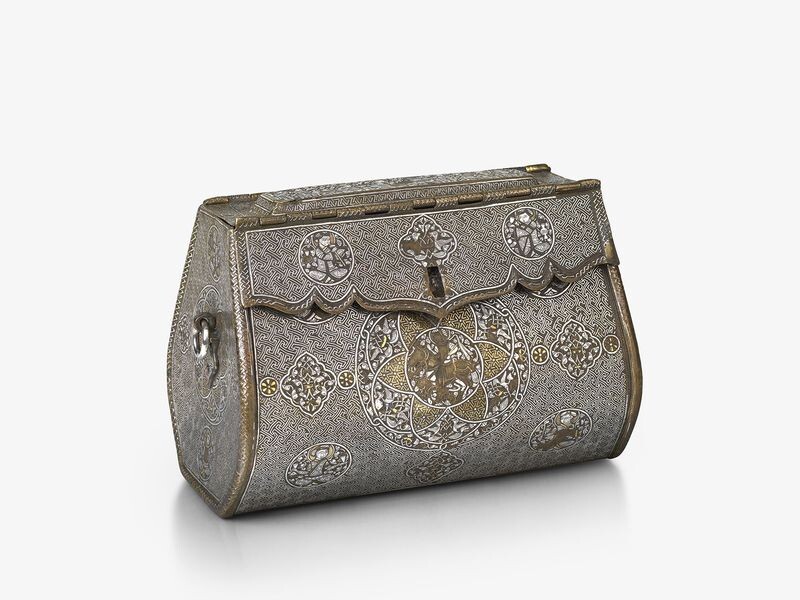
The elaborate bag was made in Mosul, Iraq, around 1300 AD Made of brass, inlaid with gold and silver, it has been identified as one of the earliest surviving examples of a women's handbag.
There is older evidence of wallets, like parts of a 4,200-year-old portfolio found in Germany. But this bag, however, remains relatively well preserved and intact.
Fabric and leather degrade quickly
The bag is a brass vessel inlaid with intricate scenes of court life in gold and silver, and probably belonged to a high-ranking member of the Court.
It was part of the 'Court and Craft: A Masterpiece from Northern Iraq' exhibition held at the Courtauld Gallery in London which focuses on art and craft made in the area around Mosul during the government of the Ilkhanids: Mongol forces under the leadership of Hulagu Khan who conquered much of the Middle East in the mid-13th century.
Wallets made from other materials such as cloth and leather are rare in the archaeological record, not because they were not popular, but because leather and cloth tend to degrade much more quickly than metal, stone or other materials. Preserving wallets after digging can also be tricky.
It is easier to find coins like this one Sutton Hoo, a place located in Suffolk, United Kingdom where remains of a 7th century funerary ship as well as various utensils were found in 1939.
Sutton Hoo has been of vital importance to historians of the Middle Ages as it provided information about that period in England; period that until the discovery was very little documented:

In Europe, in ancient times, the goldsmith's work, the embroidery, the quality of the bag or purse signaled the “social status” of the person who was the carrier.
–
The news
This brass purse has been identified as one of the earliest surviving examples of a women's purse.
was originally published in
Xataka Science
by
Sergio Parra
.
